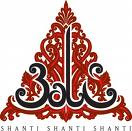THE POWER OF BALINESE CLASSICAL DANCES
 LEGONG DANCE
LEGONG DANCEA beautiful and graceful dance by very young girl. Its involves two girl dancing in mirror image of each other. Costume are very rich, and the dance contains very subtle eye, hand foot movement. The Legong is often performed in restaurant and hotels. But the most famous performances are those by The Peliatan group of Ubud Bali.
TOPENG (MASK) DANCE

The Mask Dance. The most common form is Topeng Tua (Old Mask), where solo performer dons the mask of very old man, and through his physical movement portrays the thoughts, emotions and feeling of the character.
In order variants, a troupe may portray a number of different characters. Because of the technical demands of the dance the performers can not use facial expression to convey wide variety of meanings and must use their bodies, the Topeng Dances are not commonly held for tourist, but are performed as part of other cultural events such as the Bali Arts Festival and other special occasions.
 BARONG AND RANGDA DANCE
BARONG AND RANGDA DANCEThis dance still held in the streets of traditional Balinese communities as well as in tourist venues where it may be known as the Kris Dance. Essentially it is a tale of good triumphing over evil. The Barong, which is a humorous and mischievous kind of lion, does battle with the wicked witch Rangda.
The most visual arresting part of the dance is when the Barongs supporters, a group of young men wielding traditional Balinese daggers, fall into trance and stab themselves without apparent injury. In traditional performances of the Barong, the trances are deep and real, and at the end, a priest bring the dancers out of their trance with holy water.




Tidak ada komentar:
Posting Komentar